
Thursday, 6 July 2017
Distance 14 km
Duration 3 hours 0 minutes
Ascent 50 m, descent 61 m
Map 135 of the
Map 141 of the
We woke to a beautiful clear, cool morning and were soon on our way, although initially in the opposite direction to our day’s walk.
For the sake of breakfast, we back-tracked to la Crémaillère, the bar-restaurant near the bridge, first making a detour via the boulangerie a few doors away.
The elegant dining room was closed, naturally, but we sat in the bar and indulged in our usual morning feast.

The combination of hot coffee and flaky, buttery pastries seems to sustain us for several hours, much longer than a bowl of muesli.
Thus strengthened, we marched back past the camping ground for about a kilometre until we came to a crossroads.
Our map showed that both the roads ahead degenerated into tracks, but we took the left fork, as it was smaller and stayed low, near the river, while the other one climbed over a ridge.
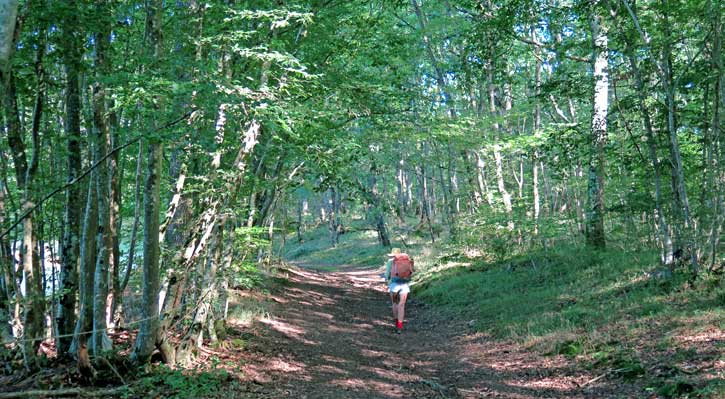
All went well until our way was blocked by a formidable gate with a Private Property sign – always a possibility on such wheel tracks.
Luckily we had just passed a wide path going up through a birch forest, so we turned back and started along it.
It was steep, but shady and as soft as a mattress, and we soon found ourselves on a small bitumen road looking down on an expanse of water, probably an artificial reservoir, as most lakes in France seem to be.

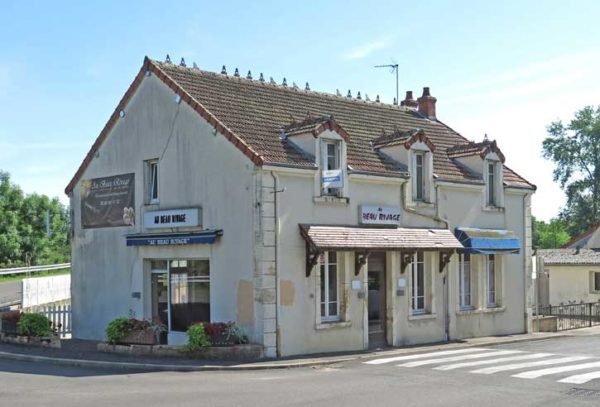
Continuing on this road, we gradually descended to river level again and went along peacefully for an hour or so, past fields and occasional houses, until we arrived at the village of Vendenesse-sur-Arroux, and the first bridge over the Arroux since Toulon.
Apart from the bridge, it consisted of little more than a bar, which looked well-kept enough, but was closed and had a “For Sale” sign in the window.
We had been walking for three hours and would have been happy to pause here, but it was only another half-hour before we came to the edge of the large town of Gueugnon.
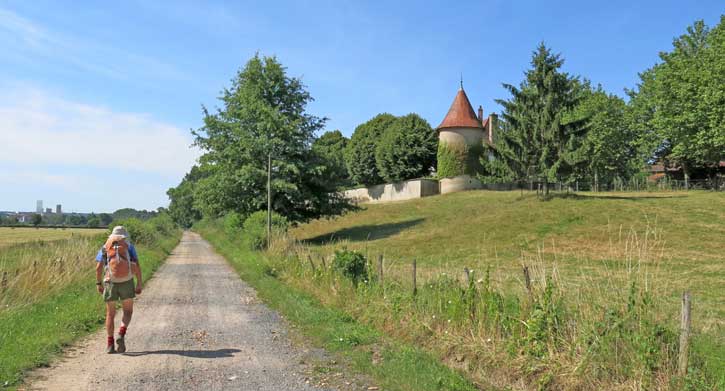
To our surprise, there was an immense carpark outside a tall, rusty security fence, beyond which we saw innumerable factory buildings, new and old, stretching into the distance.
It was a mystery, which was later solved with the aid of an information board.
We learned that there had been metal workings on this site (known as les Forges) since the early 1700s, producing mostly cast iron at first.

By the twentieth century, the factory had survived various crises and had grown enormously, employing thousands of workers, who were housed nearby, in serried rows of cottages built especially for them. These days the factory concentrates on making sophisticated machinery from stainless steel.
Arriving at the shops, we stopped at the first bar and sank down at a table on the footpath, in the shade of the building. It was
We had not decided in advance whether to stop in Gueugnon for the night or just have lunch there and press on, but the heat convinced us that stopping would be a lot pleasanter, especially if we could find a hotel with air-conditioning (there was no camping ground in this town).
Down the street on the next corner we came to just such a place, l’Hotel du Centre, and were soon installed in a comfortable room overlooking the internal courtyard, where there was a parking area for visitors, and an outdoor dining area fenced off by pot plants. People were eating lunch in the shade of market umbrellas.
We had showers and did our clothes washing, then collapsed on the soft, wide bed and fell asleep. Lunch did not happen, mainly because the only food we had was the left-over pizza from last night, which was even stodgier and less appealing than it had been when hot. We resolved to donate it to the wildlife as soon as we were out of the town tomorrow.
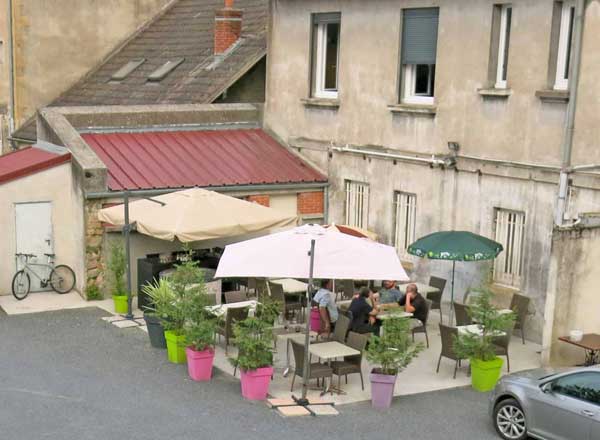
Before dinner we went for a stroll around the neighbourhood and found out another interesting thing about the town – the origin of its name. There are two rival stories.
The first is the so-called “legend of the ferryman”. In the old days, there was no bridge at Gueugnon (in fact the first bridge was built half a century after the ironworks began), and people had to wait interminably to be taken across, which caused them to moan and complain. The dialect word for this moaning was “gueugner”, hence the name.
However, it appears that this story was dreamed up by a local priest-historian in the nineteenth century. A more convincing derivation is from the Gallo-Roman name for the area – Quininum, or Guinnum – found on maps as early as the ninth century.
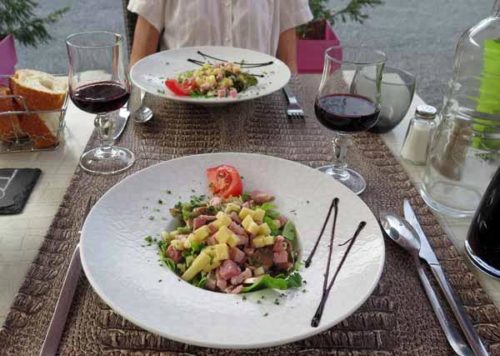
We presented ourselves for dinner at 7:30 pm, along with several men who looked like executives from the steel works.
We were all ushered out into the courtyard, where a slight breeze ruffled the potted pine trees and cooled the diners, a relief after the hot afternoon.
As we had asked for the demi-pension, the menu was fixed, and not very elaborate, but a great improvement on last night.
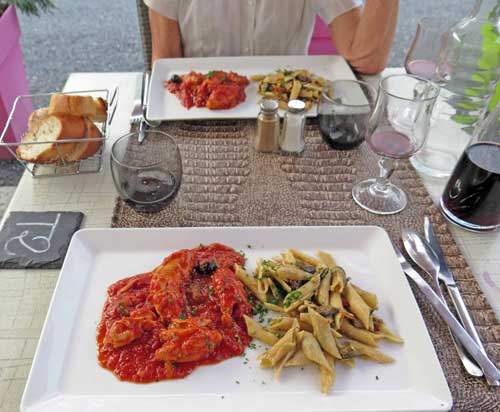
We began with salads generously laden with ham and cheese, and as usual we devoured a quantity of bread and wine with this first course.
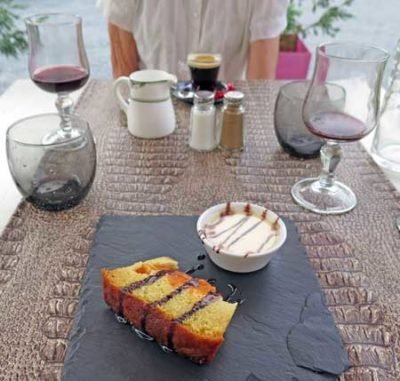
Then we had chicken forestière with penne, and finally a slice of cake, which I managed to exchange for a coffee.
Before retiring, we checked what time breakfast would be served, and went to bed looking forward to the luxury of a hotel breakfast.
Previous day: Étang-sur-Arroux to Toulon-sur-Arroux